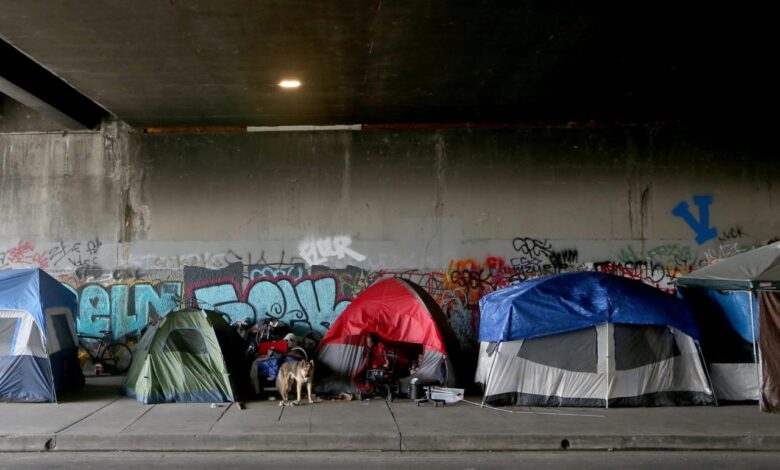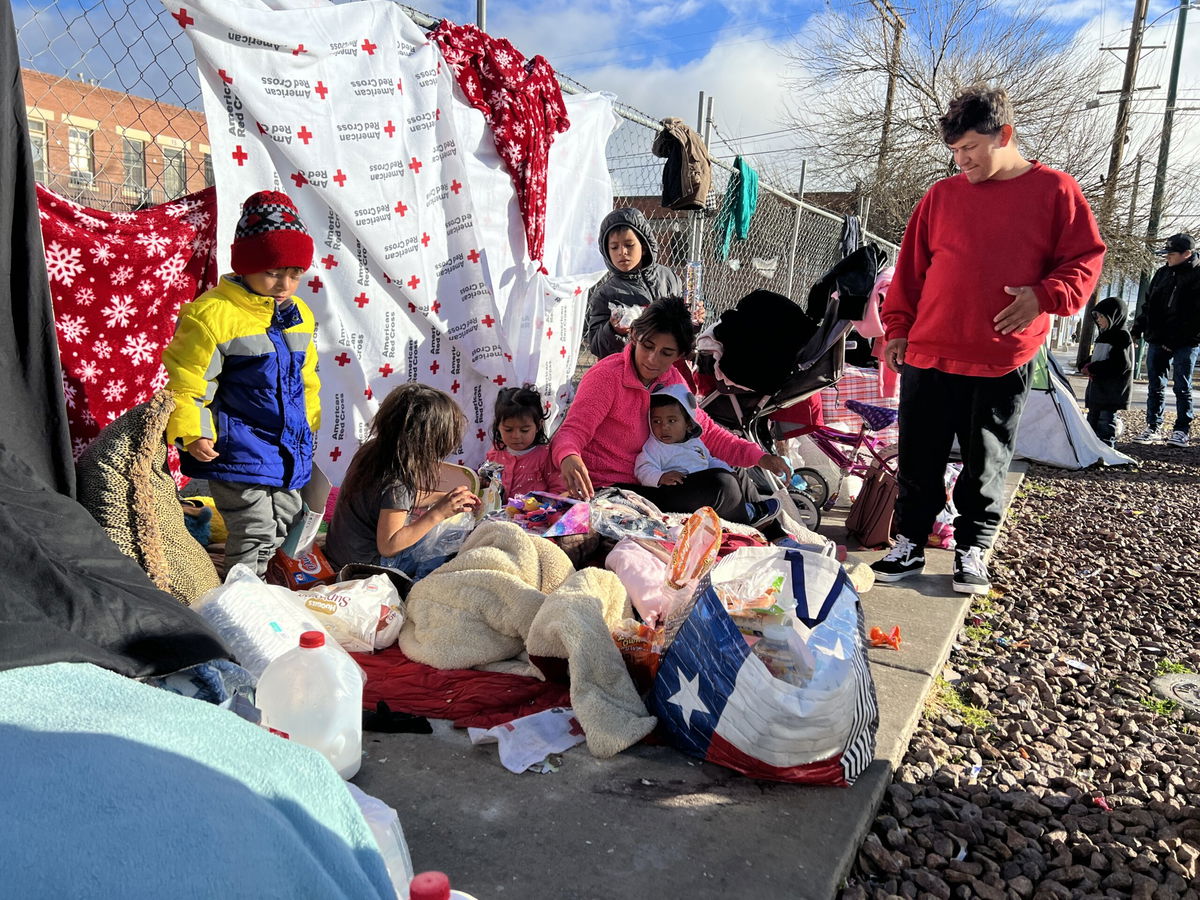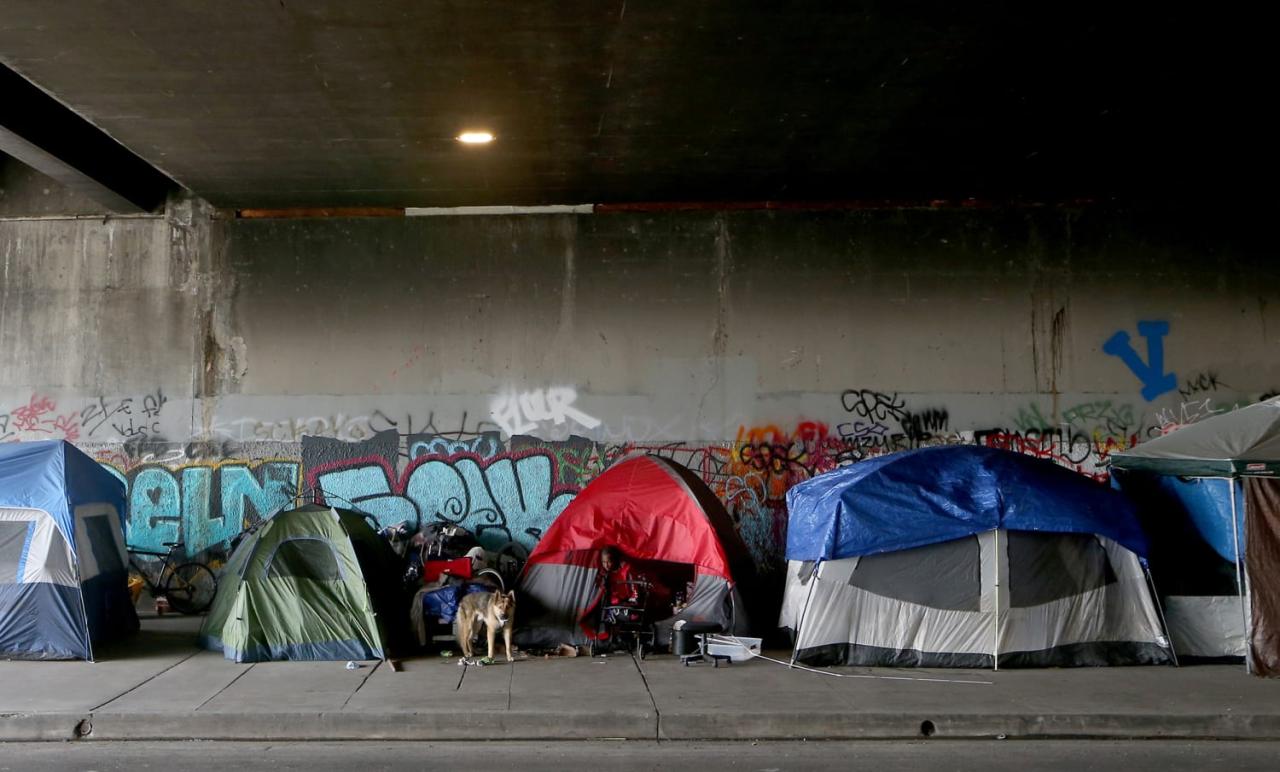
Migrant Families Homeless Shelter Evictions A Deep Dive
Migrant families homeless shelter evictions are a complex issue with far-reaching consequences. These families, often fleeing hardship and seeking a better life, find themselves in precarious situations, facing eviction from shelters that were meant to provide temporary respite. The reasons for these evictions, from policy violations to underlying economic struggles, are multifaceted and demand careful consideration. Understanding the prevalence, causes, and impacts of these evictions is crucial for developing effective solutions.
This comprehensive look at migrant families homeless shelter evictions examines the root causes, the policies that drive these actions, and the long-term effects on families. We’ll explore the demographics of these families, the challenges they face, and the potential solutions to mitigate the negative consequences of such evictions.
Prevalence and Demographics of Migrant Families Experiencing Homelessness

Homelessness among migrant families is a complex issue with far-reaching consequences. Understanding the demographics, motivations for migration, and the specific needs of these families is crucial for developing effective support systems and policies. This often overlooked population faces unique challenges that exacerbate existing vulnerabilities.The sheer scale of migrant families experiencing homelessness is difficult to quantify precisely, as data collection methods often lack consistency and comprehensive coverage across different regions.
However, existing research indicates a significant, albeit often hidden, problem. Various factors, such as economic instability, political persecution, and natural disasters, contribute to this phenomenon, highlighting the urgent need for comprehensive solutions.
Prevalence of Homelessness in Migrant Families
Accurate figures on the number of migrant families experiencing homelessness are elusive, hindered by inconsistent data collection methods and a lack of comprehensive global reporting. However, studies in various regions suggest that migrant families represent a substantial portion of the overall homeless population, often facing greater obstacles to securing housing. The absence of reliable data underscores the importance of investing in research to better understand this critical issue.
Demographic Characteristics of Migrant Families
Migrant families experiencing homelessness exhibit a wide range of demographic characteristics, reflecting the diverse motivations and origins of migration. Age, nationality, reason for migration, and legal status significantly influence the challenges they encounter. Families may include children of varying ages, creating additional pressures on resources and support systems.
- Age: Migrant families may comprise various age groups, from young children to elderly individuals. The presence of young children often complicates access to resources and necessitates specialized support services.
- Nationality: Families originate from diverse countries and regions, each with its own unique cultural and linguistic needs. This diversity demands culturally sensitive and linguistically accessible services.
- Reason for Migration: Push and pull factors, such as economic hardship, political instability, or environmental disasters, drive migration. Understanding the specific motivations behind migration helps tailor support programs to meet their needs.
- Legal Status: Migrant families often have varying legal statuses, which can significantly affect their access to housing, healthcare, and other essential services. This complex legal landscape often limits their access to formal support systems.
Examples of Disproportionately Affected Migrant Communities
Certain migrant communities are disproportionately affected by homelessness due to specific circumstances and vulnerabilities. For instance, refugees fleeing conflict zones often arrive with little more than the clothes on their backs and face significant barriers to accessing resources. Similarly, families seeking asylum may experience extended periods of uncertainty and instability, increasing their risk of homelessness.
- Refugee Families: Families fleeing conflict zones or natural disasters often face significant challenges in establishing new lives, with limited access to resources and support networks. Their vulnerability to homelessness is exacerbated by the trauma they have experienced and the need to rebuild their lives.
- Asylum Seekers: The protracted and uncertain nature of the asylum process can place immense stress on families, making them more vulnerable to homelessness. Limited access to housing and social services during this period compounds their challenges.
Regional Demographics of Migrant Families Experiencing Homelessness
| Region | Approximate Number of Migrant Families | Key Demographics | Examples of Specific Challenges |
|---|---|---|---|
| USA | Estimates vary, but significant numbers | Latin American, Asian, African | Limited access to legal aid, language barriers, discrimination |
| Europe | Data scattered and incomplete | African, Asian, Middle Eastern | Varying legal status, cultural differences, lack of integration services |
| Australia | Limited data available | Southeast Asian, African | Complex visa requirements, limited support for families |
Legal Status and Access to Shelters
The legal status of migrant families directly impacts their access to shelters and other essential services. Varying regulations and policies across regions can create significant barriers to obtaining housing. Lack of documentation or legal residency often hinders their ability to access formal support networks.
The recent evictions of migrant families from homeless shelters are a serious issue, highlighting the urgent need for more affordable housing options. With the upcoming Republican primary Iowa caucus, republican primary Iowa caucus and the focus on various social issues, it’s crucial to remember the human cost behind these evictions and the lack of support systems for vulnerable families.
These families are facing extreme hardship and need immediate assistance, regardless of political considerations.
- Legal Status: Documented migrants often have greater access to housing and services than undocumented migrants, who may face significant discrimination and exclusion.
- Access to Shelters: Policies and regulations regarding shelter access for migrant families vary significantly across regions, impacting their ability to obtain suitable housing.
Causes of Homelessness for Migrant Families
The plight of migrant families facing homelessness is a complex issue, driven by a confluence of factors pushing them from their homes and pulling them toward new destinations. Understanding these root causes is crucial for developing effective support systems and interventions to help these families rebuild their lives. The journey is often fraught with hardship, highlighting the urgent need for comprehensive solutions.The reasons behind migrant families’ homelessness are multifaceted and interconnected, impacting every stage of their journey.
Evicting migrant families from homeless shelters is a heartbreaking issue. It’s a complex problem, often tied up in bureaucratic red tape and a lack of affordable housing options. Sometimes, the ethics surrounding the purchase of stranger letters, as discussed in this article on stranger letters purchase ethics , mirror the troubling situations faced by these families, highlighting the importance of considering the impact of our actions on vulnerable communities.
Ultimately, finding lasting solutions for migrant families experiencing homelessness requires a multifaceted approach that addresses both immediate needs and long-term systemic issues.
From the initial decision to migrate to the struggles faced during resettlement, numerous challenges can contribute to a precarious situation. This exploration delves into the various forces that drive this phenomenon, emphasizing the urgent need for comprehensive support systems and interventions.
Push and Pull Factors Influencing Migration
Migration is often a response to a combination of push and pull factors. Push factors are those that drive individuals away from their home countries, such as economic hardship, political instability, or natural disasters. Pull factors, on the other hand, attract individuals to new destinations, often promising better economic opportunities, safety, or family reunification. The interplay of these factors can significantly influence the vulnerability of migrant families to homelessness.
For instance, a devastating drought in a rural region (push factor) might drive families to urban centers in search of work (pull factor), but these urban areas may lack adequate housing and support networks.
Challenges During the Immigration Process
Delays in immigration processing and legal issues can create significant hardships for migrant families. These delays can lead to financial strain, making it difficult to secure housing or maintain essential services. Furthermore, navigating complex legal systems can be overwhelming and intimidating for families unfamiliar with the process. The uncertainty and prolonged waiting periods can cause severe emotional distress, further exacerbating their vulnerability to homelessness.
Economic Factors Contributing to Homelessness, Migrant families homeless shelter evictions
Low wages and lack of job opportunities are key economic factors contributing to homelessness among migrant families. Many migrant workers find themselves in precarious employment situations with low wages, making it challenging to afford housing and other necessities. The lack of job opportunities, particularly for those with limited skills or language proficiency, can trap families in a cycle of poverty and homelessness.
For example, seasonal agricultural work, common for many migrant families, often involves low pay and unstable employment, making it difficult to secure consistent housing.
Social Isolation and Lack of Support Systems
Social isolation and the lack of adequate support systems in the community can be significant obstacles for migrant families. The challenges of adapting to a new culture, language barriers, and the absence of familiar social networks can lead to feelings of isolation and loneliness. This isolation can make it harder for families to access essential resources and services, increasing their vulnerability to homelessness.
Evicting migrant families from homeless shelters is a heartbreaking issue, and the sheer scale of the problem is often overlooked. While the tech world is buzzing about things like the FTC’s recent AI deals, like the one between Microsoft and OpenAI, ftc ai deals microsoft openai , it’s important to remember that these advancements don’t address the immediate needs of vulnerable families facing displacement.
The focus needs to stay on providing safe, stable housing solutions for these families, ensuring their basic needs are met.
Challenges in Accessing Resources and Services
Migrant families often face significant challenges in accessing resources and services. Language barriers, cultural differences, and lack of knowledge about available support networks can make it difficult for them to seek assistance. Furthermore, bureaucratic processes and stringent eligibility criteria for various programs can deter families from utilizing vital resources. Limited knowledge of the local area and available support services can also hinder their access to these essential resources.
Comparison of Reasons for Homelessness Among Migrant Families in Different Countries
| Country | Economic Factors | Immigration Process Issues | Social Isolation | Other Factors |
|---|---|---|---|---|
| Country A | Low wages, high unemployment, lack of affordable housing | Visa denials, lengthy processing times, lack of legal support | Language barriers, cultural differences, limited social networks | Natural disasters, conflict, family separation |
| Country B | Seasonal employment, lack of job security, exploitative labor practices | Lack of access to legal counsel, immigration detention | Discrimination, xenophobia, lack of community support | Domestic violence, lack of access to healthcare |
| Country C | Remittance dependence, fluctuating currency exchange rates | Visa overstays, illegal entry, lack of documentation | Fear of deportation, lack of trust in authorities | Family reunification issues, loss of livelihood |
Note: This table provides a general comparison. Specific reasons and their relative importance may vary depending on the specific context and circumstances of each country.
Shelter Eviction Policies and Practices

Evicting families from homeless shelters is a sensitive issue, especially for migrant families who often face unique challenges in navigating unfamiliar systems. These policies significantly impact the well-being of vulnerable individuals and families, potentially causing further trauma and hindering their ability to rebuild their lives. Understanding these policies is crucial for advocating for better support systems and ensuring a more humane approach to shelter management.Shelter eviction policies are often necessary to maintain order, safety, and the well-being of all residents.
However, their implementation can have devastating consequences for families who are already struggling with poverty, displacement, and cultural differences. A critical analysis of these policies is essential to identify areas for improvement and create more supportive environments.
Common Eviction Policies and Procedures
Shelter eviction procedures vary across organizations, but common grounds include violations of shelter rules and safety concerns. These policies are usually Artikeld in the shelter’s resident agreement, which families are expected to understand and abide by. Often, these agreements detail specific rules regarding noise levels, cleanliness, guest policies, and prohibited behaviors. Understanding these guidelines is critical for migrant families who might not be fully familiar with the local regulations.
Criteria for Eviction
The criteria used for eviction from shelters often encompass a range of factors. These include behavioral issues, such as excessive noise, arguments, or disruptive conduct. Safety concerns, including threats of violence or harassment against other residents, are also frequently cited reasons for eviction. Failure to comply with shelter rules, such as repeated late payments or violations of curfew, may also lead to eviction.
The recent evictions of migrant families from homeless shelters are heartbreaking, especially when contrasted with the lavish realities of some California homes. For example, the sheer cost of 2 million dollar homes california highlights the stark inequality and underscores the urgent need for more affordable housing options for these families. The disparity between such extreme wealth and the struggles of these families is a critical issue that needs immediate attention.
It’s important to note that the interpretation of these criteria can differ across shelters and organizations.
Comparison of Eviction Policies Across Shelters
Eviction policies vary significantly between different shelters and organizations. Some shelters prioritize mediation and support services to address behavioral issues before resorting to eviction, while others have stricter, more punitive approaches. This difference in approach can be attributed to factors such as the shelter’s capacity, funding, and the specific needs of the migrant families they serve. Comparing these policies helps to understand the varying levels of support available and the potential impact on vulnerable families.
Negative Impacts of Eviction
Eviction from a shelter can have devastating consequences for migrant families. Separation from support systems, disruption of integration efforts, and the trauma associated with losing a temporary home can significantly hinder their ability to regain stability and safety. The sudden loss of a safe environment can also lead to feelings of isolation, fear, and uncertainty. Eviction often leaves families without adequate resources to find alternative housing, creating a vicious cycle of homelessness.
Best Practices for Eviction Procedures
Prioritizing the well-being of migrant families during eviction procedures is crucial. Best practices include providing adequate notice, offering alternative housing options if possible, and ensuring access to support services during and after the eviction process. These support services can include legal assistance, counseling, and referrals to community resources. Employing a more collaborative and supportive approach can mitigate the negative impacts of eviction.
Eviction Policies of Various Homeless Shelters (Illustrative Example)
| Shelter Name | Region | Common Eviction Criteria | Support Services Offered |
|---|---|---|---|
| Hope House | Northeast | Disruptive behavior, safety concerns, non-compliance with rules | Mediation, counseling, referrals to legal aid |
| Sunrise Shelter | Midwest | Serious safety violations, repeated rule breaches | Crisis intervention, temporary housing assistance, language support |
| New Beginnings | West Coast | Violence, harassment, significant safety concerns | Emergency housing, cultural orientation programs, case management |
This table provides a simplified illustration of the diverse eviction policies and support services offered by different shelters. The actual policies and procedures vary greatly.
Impact of Eviction on Migrant Families
Eviction, a traumatic experience for any family, can have devastating consequences for migrant families, exacerbating existing vulnerabilities and hindering their ability to rebuild their lives. The disruption of routines, the loss of stability, and the fear of the unknown can leave lasting emotional scars and affect the well-being of children. Understanding the specific challenges faced by migrant families during and after eviction is crucial for developing effective support systems.The emotional and psychological toll of eviction on migrant families is significant.
The sudden loss of a home, often a place of refuge and security, can trigger feelings of fear, anxiety, and hopelessness. The stress associated with finding new housing, navigating unfamiliar legal systems, and re-establishing their lives can lead to increased rates of depression, post-traumatic stress disorder (PTSD), and other mental health issues. Migrant families may also experience feelings of shame and stigma, compounded by the cultural and linguistic barriers they face in accessing mental health services.
Emotional and Psychological Consequences
The emotional distress caused by eviction can be profound, impacting both parents and children. Parents may experience feelings of inadequacy and guilt for not being able to provide a stable home environment. Children, especially, are highly susceptible to the emotional fallout of displacement, which can lead to anxiety, depression, and behavioral problems. The disruption of familiar routines and the loss of a sense of belonging can have long-term consequences on their development and well-being.
Cultural factors also play a role, with some cultures emphasizing the importance of a stable home environment for children’s emotional and psychological development.
Impact on Children’s Education, Health, and Development
Eviction can disrupt a child’s education by requiring frequent changes of schools, loss of educational materials, and missed school days. The stress and uncertainty associated with eviction can negatively impact a child’s physical health, leading to sleep disturbances, loss of appetite, and increased susceptibility to illness. The overall development of children can also be negatively impacted, as they may experience delays in cognitive and social-emotional development due to the instability and trauma caused by eviction.
The recent evictions from migrant families’ homeless shelters are heartbreaking. While the nation grapples with these unfortunate circumstances, the results of the New Hampshire Democratic primary ( results new hampshire democratic primary ) are certainly raising some eyebrows. Ultimately, though, these political happenings shouldn’t overshadow the crucial need for more support and resources for these vulnerable families.
Children from migrant families often face additional challenges in accessing educational and healthcare resources, as they may not have legal documentation or understanding of the local systems.
Challenges of Re-establishing Housing and Accessing Support Systems
Finding safe and affordable housing after eviction is a significant challenge for migrant families. Limited resources, lack of financial stability, and cultural barriers can make it difficult to secure suitable accommodations. Accessing support systems, such as social services, legal aid, and mental health resources, is also often hampered by language barriers, lack of awareness, and mistrust of authorities.
The fear of deportation or other legal repercussions can further deter migrant families from seeking help. The trauma of eviction can also lead to a reluctance to seek help.
Comparison of Impact Across Family Types
The impact of eviction varies across different migrant family types. Single-parent families may face additional challenges in balancing childcare responsibilities with the search for housing and financial stability. Families with young children may experience greater disruption in their routines and educational opportunities. Extended families may face challenges in coordinating housing arrangements and accessing resources. Different cultural values also influence how families respond to and cope with eviction.
Support Services for Migrant Families
A range of support services can assist migrant families in recovering from eviction. These services can include temporary housing assistance, legal aid for housing disputes, and mental health support services. Cultural sensitivity and linguistic support are crucial for ensuring that services are accessible and effective. Community-based organizations and non-profit groups often play a vital role in providing resources and support to migrant families.
Resources and Support Systems
| Resource Category | Description | Examples |
|---|---|---|
| Temporary Housing | Short-term accommodations to provide immediate shelter. | Emergency shelters, transitional housing programs |
| Legal Aid | Assistance with housing disputes and legal processes. | Legal clinics, non-profit legal aid organizations |
| Mental Health Services | Support for emotional and psychological well-being. | Counseling services, support groups |
| Financial Assistance | Short-term financial aid for housing costs. | Government assistance programs, charitable organizations |
| Cultural Support | Services addressing cultural and linguistic needs. | Interpreters, cultural sensitivity training for staff |
Legal Rights and Protections for Migrant Families in Shelters
Navigating the complexities of homelessness, especially for migrant families, often means facing a labyrinth of legal and social challenges. Understanding the rights and protections afforded to these families within shelters is crucial for ensuring their safety and well-being. This exploration delves into the legal frameworks, the roles of supportive organizations, and examples of successful interventions, equipping individuals and organizations with a comprehensive understanding of these critical issues.Legal frameworks are designed to safeguard the vulnerable, yet migrant families often face unique obstacles in accessing and enforcing these rights.
Effective legal aid and social work interventions are vital to bridge this gap and ensure that migrant families are not only housed but also treated with dignity and respect.
Legal Rights Regarding Shelter Access and Eviction
Migrant families, like all families, have fundamental rights concerning shelter access and eviction. These rights often stem from housing codes, human rights legislation, and potentially specific state or local ordinances. Access to shelter is often tied to demonstrating a need for such services and adhering to shelter rules, which are typically designed to maintain order and safety. Eviction policies should be transparent and follow established procedures.
The legal framework often includes due process, allowing families to contest eviction decisions.
Legal Frameworks and Policies Protecting Migrant Families
Protecting migrant families from discrimination and abuse is a critical aspect of ensuring their well-being. Federal and state laws, along with international human rights agreements, often prohibit discrimination based on ethnicity, nationality, or immigration status. These protections are meant to prevent the denial of services, unfair treatment, and unsafe conditions. Policies regarding family reunification and assistance with immigration procedures are also crucial in preventing the separation of families.
Roles of Social Workers and Legal Aid Organizations
Social workers and legal aid organizations play a vital role in supporting migrant families facing eviction. Social workers can assess the family’s needs, provide counseling, and connect them with relevant resources. Legal aid organizations can provide legal representation and guidance on eviction procedures, advocating for the family’s rights. Their combined efforts often create a strong support network for migrant families navigating complex legal and social situations.
This includes advocacy for policies that prioritize the needs of these families and addressing potential biases in the shelter system.
Examples of Successful Legal Interventions
Successful legal interventions have often involved challenging discriminatory eviction practices or advocating for better shelter conditions. One example might involve a legal aid organization successfully appealing an eviction notice based on procedural violations or a social worker advocating for additional resources for a family experiencing domestic violence. These cases demonstrate how legal interventions can significantly impact the lives of migrant families, often preventing family separation and ensuring access to necessary resources.
Creating a Comprehensive Guide for Migrant Families
A comprehensive guide for migrant families regarding their legal rights and protections should be readily available in multiple languages. This guide should cover topics like:
- Shelter policies and procedures
- Rights related to eviction processes
- Resources for legal aid and social work support
- Contact information for relevant organizations
- Information about their specific legal rights under federal, state, and local laws
The guide should be easily accessible, clearly written, and culturally sensitive. It should provide practical information and empower migrant families to understand and exercise their rights.
Alternatives to Eviction for Migrant Families

Evicting migrant families from shelters, while sometimes deemed necessary due to capacity constraints or violations of policies, often has devastating consequences. Finding sustainable, supportive alternatives is crucial to ensuring the well-being and stability of these families, preventing further displacement and hardship. This approach requires a holistic strategy, addressing the root causes of homelessness and providing pathways to permanent housing.Effective alternatives to eviction prioritize the families’ needs and rights, focusing on long-term solutions that move them toward self-sufficiency.
This involves collaboration between shelter staff, community organizations, and government agencies to develop individualized plans that support families in achieving housing stability.
Alternative Solutions to Shelter Evictions
Finding alternatives to shelter evictions requires a multifaceted approach that goes beyond immediate housing solutions. It involves addressing the root causes of homelessness, providing comprehensive support services, and fostering community involvement. The goal is to empower families to transition into permanent housing while maintaining a sense of stability and belonging.
- Emergency Housing Programs: Expanding access to emergency housing options, such as temporary shelters with extended stays or housing assistance programs, allows for more time to find suitable long-term housing. This includes offering financial assistance for temporary rental deposits or utility payments, providing temporary shelter in safe and suitable facilities, and ensuring access to essential services like food, healthcare, and childcare.
- Housing Assistance Programs: Government and non-profit programs providing financial assistance for rental deposits, security, or first month’s rent can significantly reduce barriers to finding and maintaining permanent housing. These programs should consider the unique needs of migrant families, including language barriers, cultural differences, and limited access to resources. They should prioritize culturally sensitive support services and provide assistance in navigating the complexities of the rental market.
- Community-Based Support Systems: Community organizations play a vital role in connecting migrant families with resources, services, and support networks. This includes providing case management services, language assistance, cultural orientation, and advocacy to navigate the complex housing system. Such systems can offer tailored assistance for specific challenges faced by migrant families, such as immigration status concerns or domestic violence issues. Local outreach programs can assist with job placement and training to improve financial stability.
- Collaboration and Coordination: A coordinated effort between shelters, social service agencies, and community organizations is essential for success. Information sharing, streamlined referral processes, and shared resources ensure migrant families have access to a comprehensive network of support. Clear communication channels and collaborative agreements between agencies can reduce duplication of services and provide more efficient assistance.
Comprehensive Program for Preventing Evictions
A comprehensive program to prevent evictions must focus on addressing the root causes of homelessness, building a robust support system, and empowering migrant families to achieve self-sufficiency.
| Program Component | Description |
|---|---|
| Needs Assessment | Conducting thorough assessments of each family’s unique needs, including housing preferences, financial situations, and support systems, to tailor interventions effectively. |
| Case Management | Assigning dedicated case managers to each family to provide individualized support, guidance, and advocacy in navigating the housing system. Case managers can connect families with appropriate resources and support services. |
| Housing Search Assistance | Offering intensive support in locating suitable permanent housing options, including assistance with applications, inspections, and lease agreements. This includes identifying and utilizing available resources, such as affordable housing programs and subsidized rentals. |
| Financial Literacy Programs | Providing financial education and resources to help families improve budgeting skills, develop savings plans, and manage their finances effectively. |
| Cultural Sensitivity Training | Ensuring shelter staff and support providers receive training on cultural sensitivity to better understand and address the unique needs of migrant families, which include language barriers, cultural differences, and potential immigration status concerns. |
| Community Partnerships | Building strong partnerships with community organizations, employers, and local governments to identify employment opportunities, vocational training, and educational support for families. |
“A comprehensive approach to preventing evictions requires a multifaceted strategy that prioritizes the needs of migrant families, builds strong support networks, and promotes their self-sufficiency.”
Final Thoughts: Migrant Families Homeless Shelter Evictions
In conclusion, migrant families facing homelessness and shelter evictions require a multifaceted approach. Understanding the underlying causes, including the push and pull factors of migration, economic hardships, and legal barriers, is crucial. Shelter policies need to be reviewed to prioritize the well-being of these families. Furthermore, alternative solutions, such as programs that assist in finding permanent housing, are essential.
By fostering community support, providing legal aid, and promoting compassionate policies, we can work toward creating a more supportive and sustainable environment for migrant families.
Key Questions Answered
What are some common reasons for eviction from homeless shelters?
Evictions can stem from various factors, including safety concerns, repeated violations of shelter rules, or inability to meet specific criteria set by the shelter. The reasons often vary depending on the specific shelter and the regulations it operates under.
What legal protections do migrant families have regarding shelter evictions?
Migrant families, while facing unique legal challenges, often have rights related to shelter access and eviction. These rights may vary depending on their immigration status and the specific laws in place in the location. Legal aid organizations can play a significant role in helping families navigate these complexities.
How can community organizations support migrant families facing eviction?
Community organizations can play a vital role in supporting migrant families by offering temporary housing assistance, connecting them with legal aid, and providing resources to help them find permanent housing solutions. Their support often acts as a lifeline, mitigating the negative impact of eviction.
What are some examples of best practices for eviction procedures that prioritize the well-being of migrant families?
Best practices might include providing ample notice of eviction, offering support services to families during the transition process, and prioritizing the safety and well-being of children. Effective communication and a focus on family needs are crucial.




